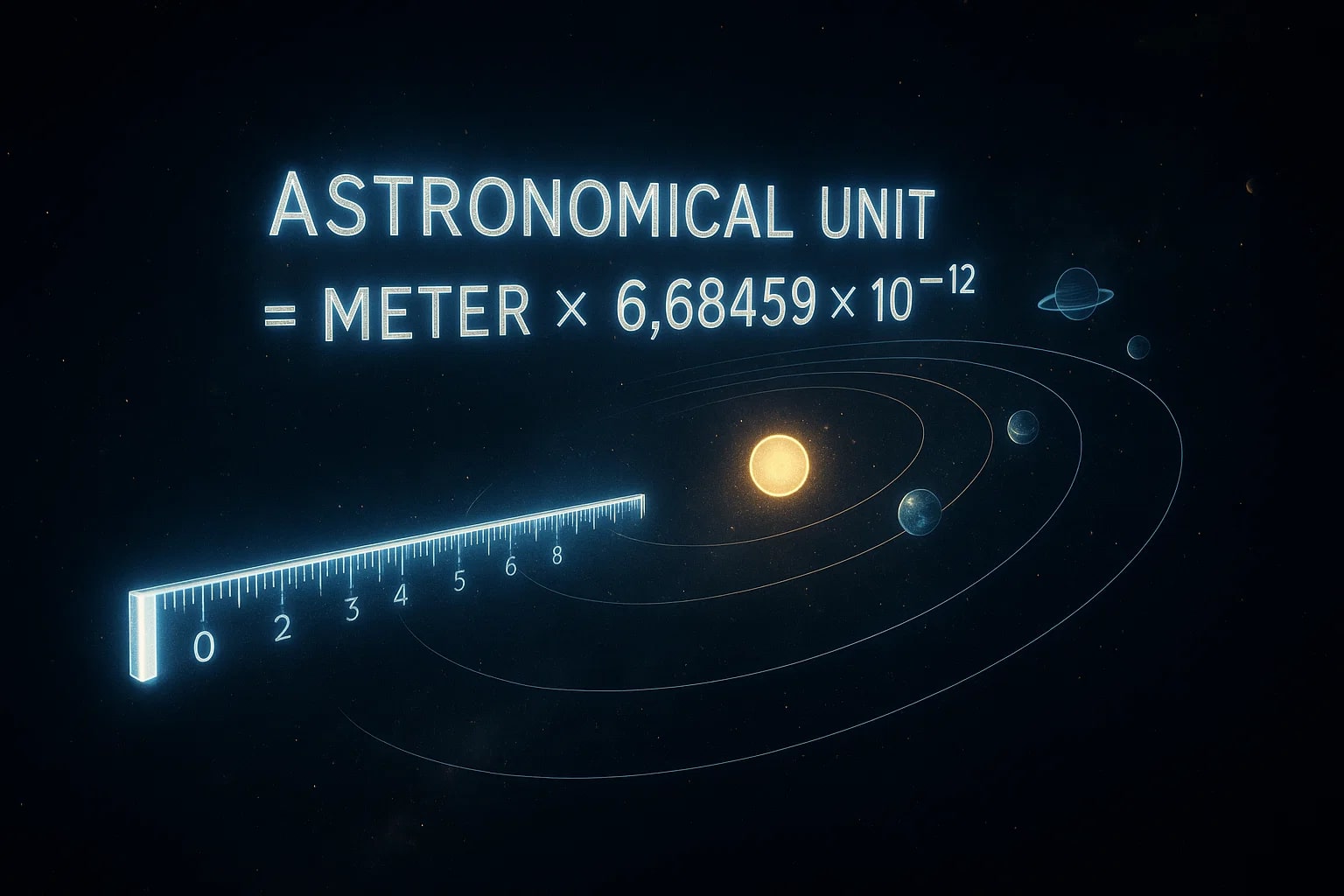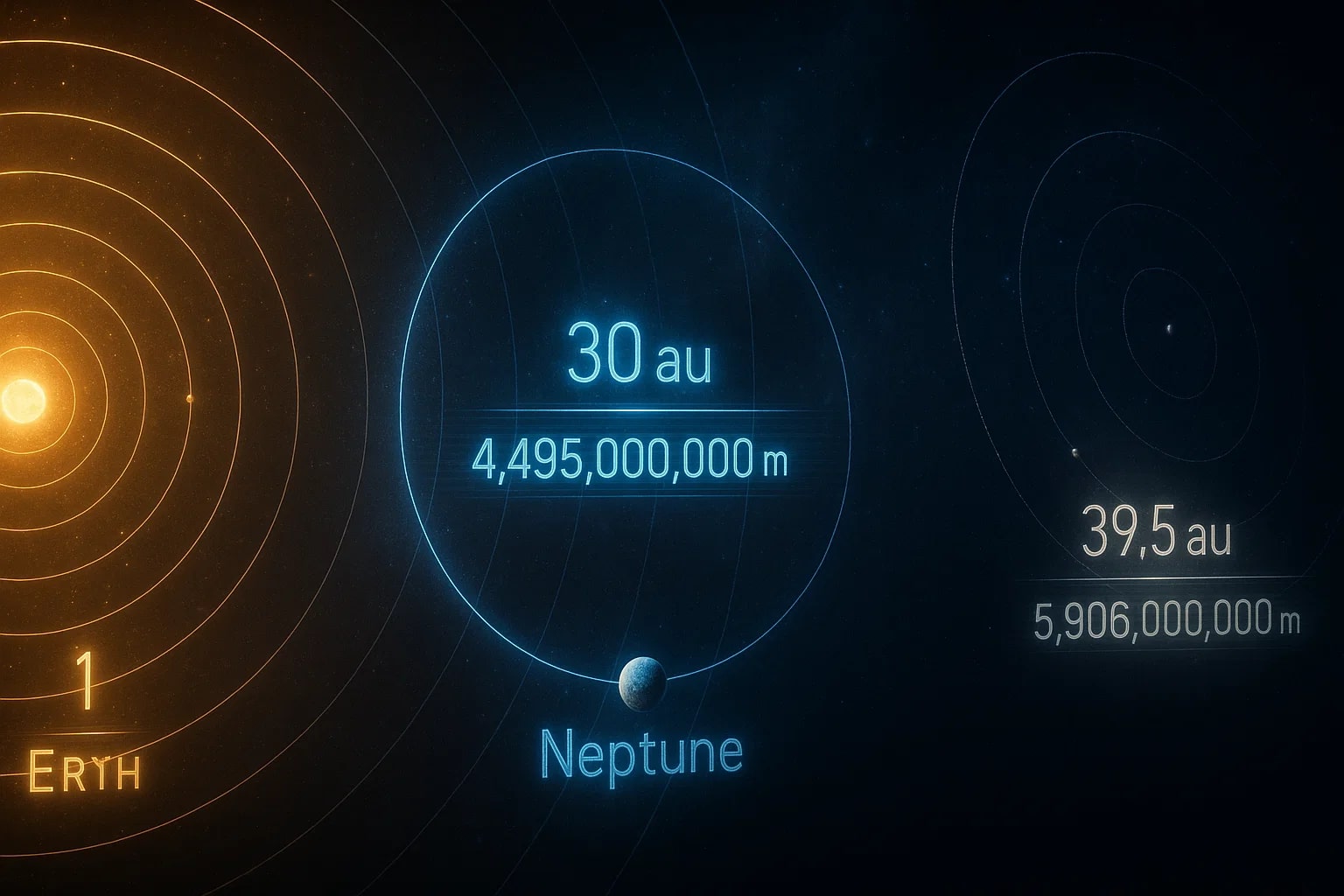meter to astronomical unit – How to convert m to au
Converting from meter to astronomical unit bridges everyday measurement with the vast scales of the solar system. The meter is the SI base unit of length used worldwide, while the astronomical unit (au) is used by astronomers to describe distances between planets and the Sun. Learning how to convert m to au helps translate human-scale distances into astronomical scales.

What is a Meter (m)?
The meter is the SI base unit of length, defined as the distance light travels in 1/299,792,458 of a second. It is the universal standard for science, trade, engineering, and daily life.
What is an Astronomical Unit (au)?
An astronomical unit is defined as the average distance between Earth and the Sun:
1 au = 149,597,870,700 m.
It provides a convenient way to describe planetary orbits and distances within our solar system.
How to Convert m to au
The formula is:
astronomical unit = meter × 6.68459 × 10⁻¹²
For example, let’s convert 3 × 10¹¹ m into astronomical units:
astronomical unit = 3 × 10¹¹ × 6.68459 × 10⁻¹² = 2.005 au
So, 3 × 10¹¹ m ≈ 2.01 au.
For other calculations, you can use the Length Converter or explore further with the Conversion Tools.
Do you know?
-
The astronomical unit was first used in the 17th century to simplify measurements of the solar system.
-
Earth is about 1 au from the Sun, while Jupiter orbits at roughly 5.2 au.
-
The definition of the au was standardized in 2012 by the International Astronomical Union (IAU) as exactly 149,597,870,700 m.
-
Light takes about 8 minutes and 20 seconds to travel 1 au.
Measuring the Solar System
Astronomical units make it easier to describe interplanetary distances without writing out extremely large numbers in meters. For example, Neptune orbits at about 30 au from the Sun, while Pluto averages about 39.5 au.
By converting meters into au, astronomers can present data in a way that is easier to compare and understand across different planetary orbits.

From Everyday Units to Cosmic Distances
The conversion from meter to astronomical unit highlights how science scales from the human world to the cosmos. While the meter helps in construction and daily life, the au provides clarity when exploring the vastness of space.
By applying this formula, you can transform standard SI measurements into astronomical terms—making the universe a little easier to grasp.

